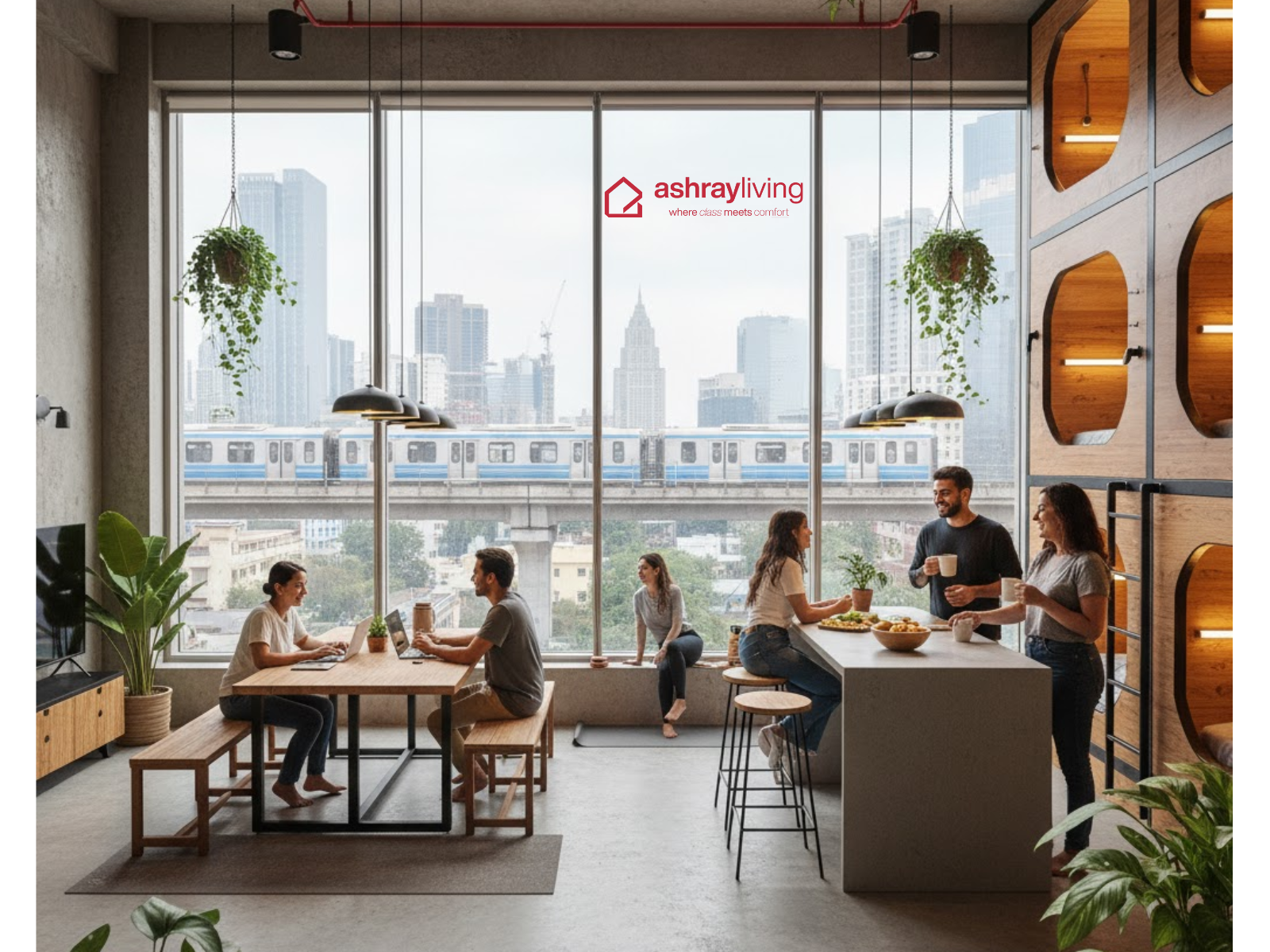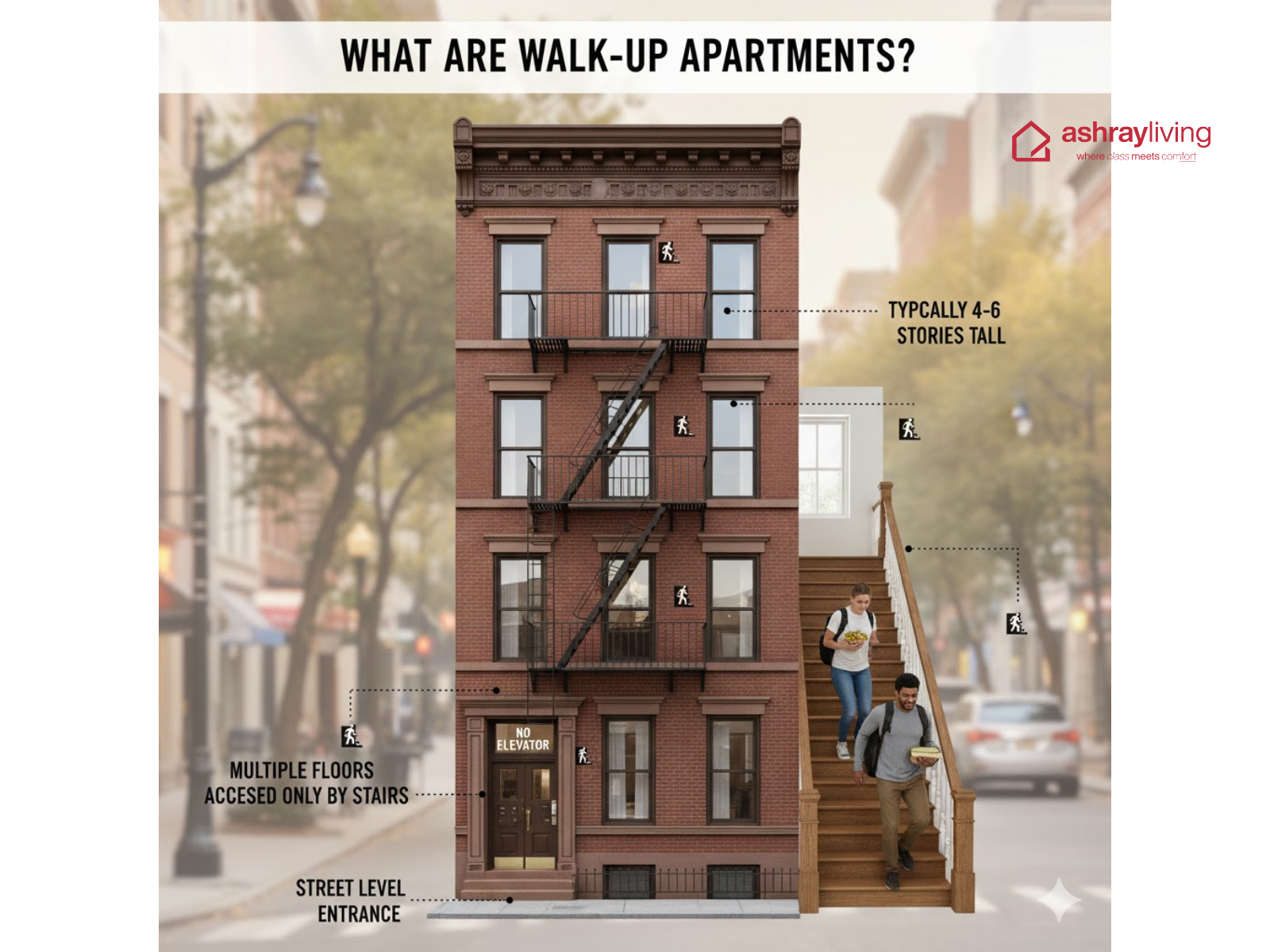
The urban landscape in India is undergoing a significant transformation, with rapid urbanization, changing lifestyle choices, and an increasingly mobile workforce. As cities grow, traditional housing models are struggling to meet the needs of a diverse and dynamic population. Enter co-living, an innovative housing concept that is gaining immense popularity, especially among millennials and Gen Z. This article delves into why co-living is emerging as the future of urban living in India.
What is Co-living?
Co-living is a modern housing arrangement where individuals share living spaces such as kitchens, lounges, and bathrooms while having private or semi-private bedrooms. Unlike traditional renting, co-living offers a more flexible, community-based lifestyle that combines the best elements of shared living and private spaces. It typically includes services like housekeeping, high-speed internet, utilities, and access to community events, making it an attractive option for urban dwellers.
Factors Driving the Popularity of Co-living in India
1. The Rise of Urbanization
India’s urban population is growing at an unprecedented rate. According to the United Nations, by 2031, India’s urban population is expected to reach 600 million, or around 40% of the total population. This surge in urbanization has led to a shortage of affordable and quality housing, especially in major cities like Mumbai, Delhi, Bengaluru, and Pune.
Co-living offers a practical solution to this problem. It provides affordable and flexible housing options in prime urban locations where rents are high and real estate is scarce. With co-living, people can rent a space that is typically more affordable than traditional apartments, without compromising on quality or location.
2. Affordable Housing in Expensive Cities
One of the key reasons co-living is gaining traction is the rising cost of living in Indian cities. Rent prices for decent apartments in metro cities are soaring, often making it unaffordable for young professionals and students. Co-living allows individuals to live in prime locations at a fraction of the cost, by sharing space and utilities with others.
For example, a room in a co-living setup in a city like Mumbai may cost between ?15,000 to ?30,000, while renting an entire apartment in the same area can be upwards of ?50,000. This cost-efficiency makes co-living an attractive proposition for individuals who prioritize convenience and savings.
3. A Growing Demand for Flexibility
In today’s fast-paced world, people are increasingly prioritizing flexibility over long-term commitments. Traditional leases in India often come with rigid contract terms and large security deposits, which can be burdensome for people who move frequently for work, studies, or personal reasons.
Co-living providers typically offer shorter lease durations (ranging from a month to a year), allowing tenants to move in and out with ease. Many co-living spaces also provide fully furnished apartments, which further reduce the hassle for people who are constantly on the move.
Additionally, co-living spaces often allow tenants to upgrade or downgrade their rooms based on their needs, making it adaptable to changing life circumstances.
4. Community Living and Networking
One of the standout features of co-living is the sense of community it fosters. Unlike traditional apartment living, where neighbors may not interact with each other, co-living spaces emphasize community engagement. Most co-living setups host events such as movie nights, workshops, yoga sessions, and social gatherings, creating an environment where residents can form friendships, network, and collaborate.
For young professionals, students, and digital nomads, this sense of community is especially appealing. Co-living provides an excellent opportunity to connect with like-minded individuals, share ideas, and even collaborate on projects. This social element is something that traditional housing arrangements often lack, making co-living an appealing option for people looking for a more interactive and engaging living experience.
5. All-Inclusive Amenities
Co-living spaces often come with a wide range of amenities, making life more convenient for residents. These typically include:
-
High-speed Wi-Fi: Essential for remote workers and students.
-
Housekeeping Services: Regular cleaning ensures that the space remains tidy without any extra effort.
-
Utilities Included: Water, electricity, and gas charges are often included in the rent, reducing the need to manage multiple bills.
-
Fully Furnished Spaces: Most co-living providers offer fully furnished rooms with beds, wardrobes, desks, and sometimes even kitchen appliances, making it easy for residents to move in without the hassle of buying furniture.
-
Security and Maintenance: Many co-living spaces offer 24/7 security, ensuring the safety of tenants, and handle maintenance issues swiftly.
This "all-inclusive" approach offers significant convenience, particularly for people who are new to a city and may not have the time or inclination to set up utilities and arrange for furnishings.
6. Appeal to Millennials and Gen Z
Millennials and Gen Z make up a significant portion of India’s urban population. These generations are more likely to prioritize experiences, flexibility, and community over traditional markers of success, such as owning property or committing to long-term leases. Co-living offers a lifestyle that aligns with their values, providing affordable, convenient, and dynamic living arrangements that cater to their social, professional, and personal needs.
For many young Indians, co-living also provides an alternative to the pressures of family-based housing arrangements, allowing them to experience independence while still benefiting from the security of a shared living space.
7. Environmentally Friendly and Sustainable Living
As awareness of environmental issues increases, many co-living spaces are adopting sustainable practices such as waste segregation, water conservation, and energy-efficient appliances. Some co-living providers are also incorporating green spaces, rooftop gardens, and eco-friendly materials in their designs. For environmentally conscious urban dwellers, these practices make co-living an attractive choice.
Additionally, sharing living spaces and resources naturally leads to a reduction in individual carbon footprints, making co-living a more sustainable option compared to traditional housing.
The Future of Co-living in India
The future of co-living in India looks promising, with both domestic and international players investing in the sector. Companies like OYO Life, ZoloStays, Colive, and Curefit’s Get Fit are leading the charge in this rapidly growing industry, providing a wide range of co-living options that cater to different needs and preferences.
Government policies aimed at improving urban infrastructure and promoting rental housing are also expected to fuel the growth of co-living spaces. As the demand for affordable housing continues to rise, the co-living model is likely to become a mainstream solution for urban residents.
Additionally, the rise of remote work and hybrid work models post-pandemic is expected to further accelerate the adoption of co-living. Digital nomads, freelancers, and remote workers are increasingly looking for flexible living arrangements that allow them to stay connected to a vibrant community while maintaining a work-life balance.
Challenges to Co-living Adoption
While the potential of co-living is vast, there are still challenges to widespread adoption in India. These include:
-
Cultural Barriers: Many Indians, especially those from traditional families, may not be accustomed to the idea of shared living, and the concept of co-living may take time to gain acceptance.
-
Quality Control: Not all co-living spaces are created equal. Some may not live up to the promised standards, leading to a negative perception of the concept. Quality and consistency across the sector need to be ensured.
-
Regulatory Challenges: In many cities, regulations around renting and leasing are not clear, which can pose challenges for co-living providers who need to comply with local laws.
Conclusion
Co-living is rapidly emerging as the future of urban living in India, offering affordable, flexible, and community-centric solutions to the challenges faced by the growing urban population. With the rise of young professionals, students, and remote workers, co-living is poised to become a mainstream housing option in major cities. It caters to the needs of modern urban dwellers, blending convenience, social connection, and cost-effectiveness, all while promoting sustainable living. As the co-living sector continues to grow, it could play a crucial role in shaping the future of urban living in India.
Also Read








